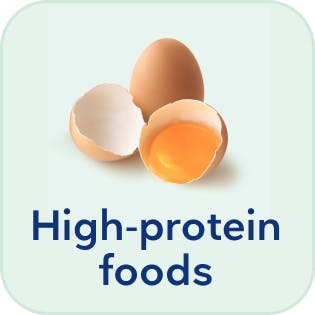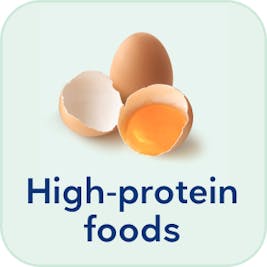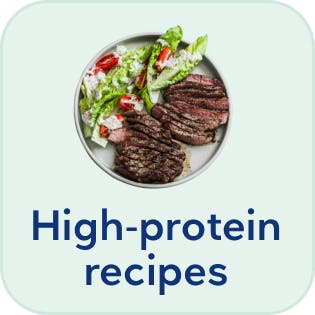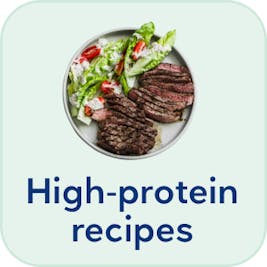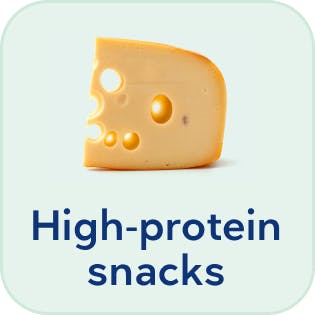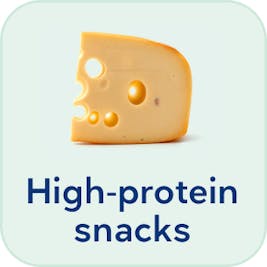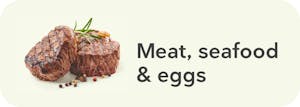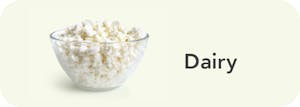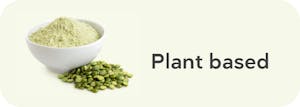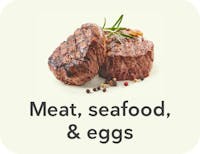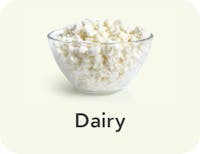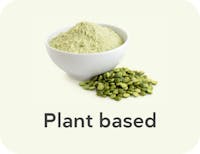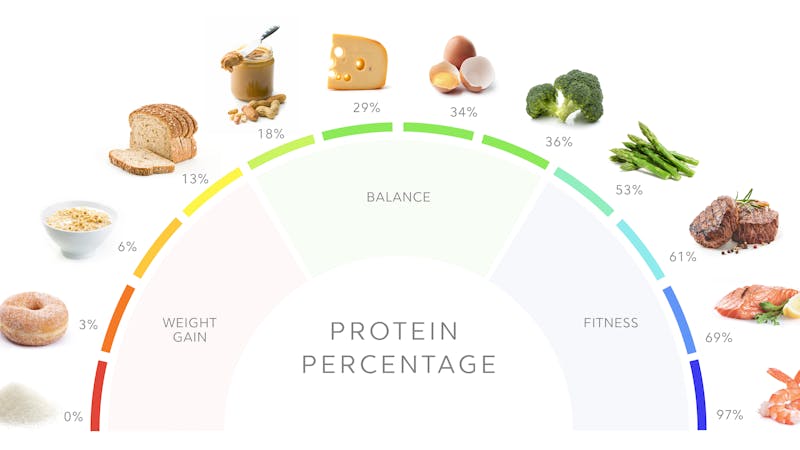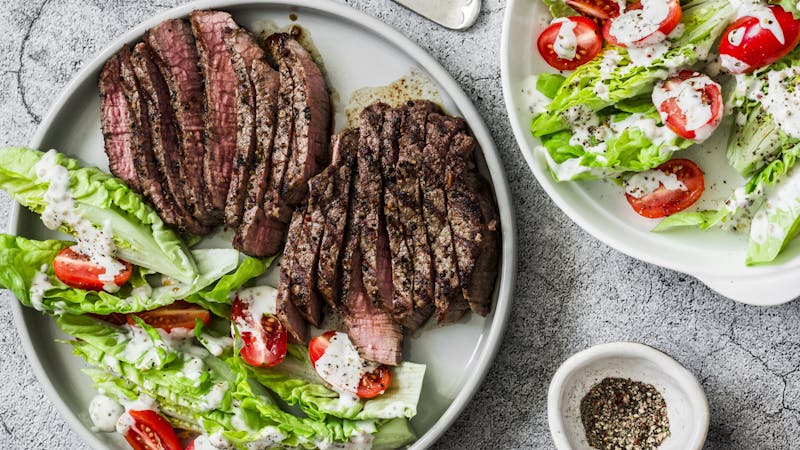The best high-protein nuts
Nuts are a favorite food among many people, including those who follow low-carb, plant-based, or Mediterranean diets. Are nuts high in protein? Although they are nutritious, their protein content isn’t that impressive because they are high in fat and total calories.
The good news is, you can still enjoy nuts on a low-carb diet — if you stick to modest portions. Which nuts are highest in protein? Read on to find out how different nuts rank on the protein scale.
The image below shows the protein as a percentage of calories for different nuts.The higher the number, the more protein the food provides per calorie.
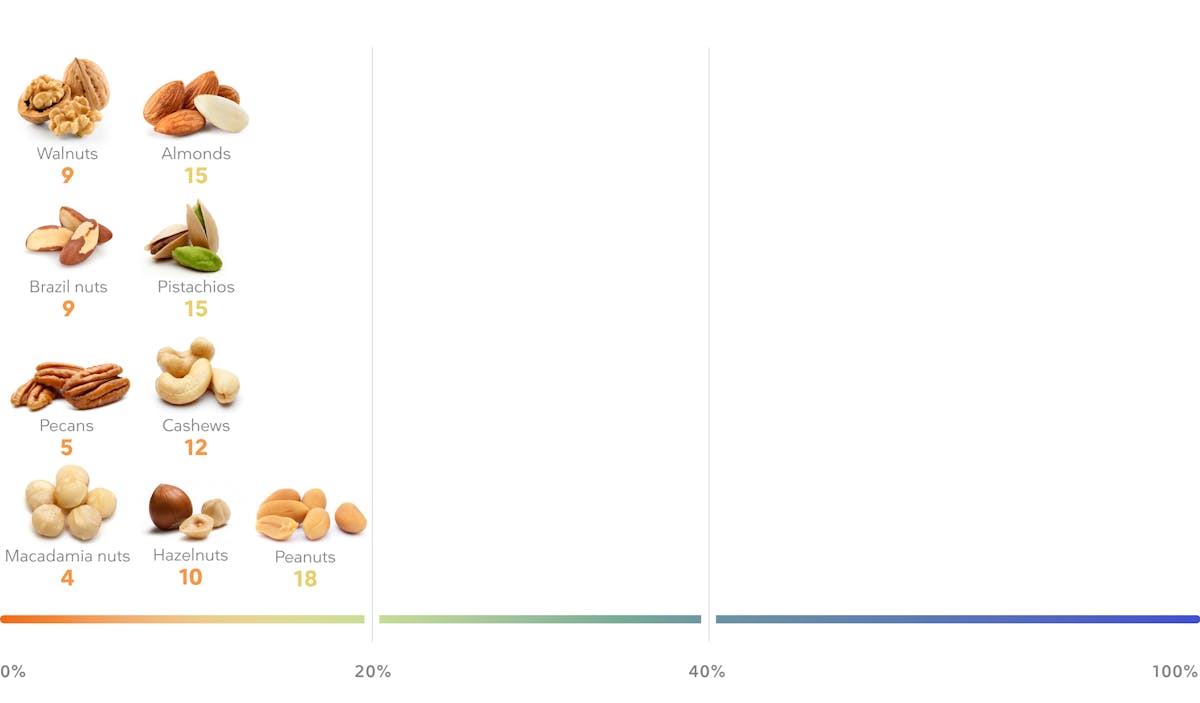





Key takeaways
Protein in nuts. Nuts contain some protein, along with vitamins and minerals. However, they don’t provide a lot of protein per calorie. Learn moreKeep nut portion sizes small. Nuts are tasty, high in calories, and all too easy to overeat. Learn more
The best high-protein nuts. Some nuts provide more protein than others. Peanuts are at the top of the list, while macadamia nuts are at the bottom. Learn more
More high-protein guides
More high-protein guides
Protein in nuts
Nuts are dried seeds that have hard, inedible shells. Although peanuts are technically legumes, they are often grouped with tree nuts because they have similar nutrition profiles, texture, and taste.
Nuts contain protein, fiber, fat (mostly monounsaturated and polyunsaturated fatty acids), vitamin E, magnesium, and other vitamins and minerals.
How much protein do nuts provide? You’ll get about 2 to 7 grams of protein per ounce (30 grams) — approximately one small handful — depending on the type of nut.
However, the protein percentage of all nuts is low. This means that they don’t provide much protein per calorie.
The protein percentage is the portion of a food’s calories, excluding fiber, that come from protein.
Nuts contain protein, carbs, and fat. But they have far more fat than protein or carbs. Because most of the calories in nuts come from fat, their protein percentages are very low.
Additionally, unlike animal foods and soy, nuts are low in some of the essential amino acids (the building blocks of protein) you need to get from food every day.
So while nuts can supply your body with some protein, you’ll get far more protein for fewer calories by eating foods from our meat, dairy, and plant-based protein food guides. Several high-protein snacks are also better options than nuts for maximizing protein per calorie.
How much protein do you need? Aim to eat at least 90 grams of protein per day if you’re a woman and 120 grams if you’re a man of average height and build. Eat more if you’re a man taller than 6 feet (183 cm) or a woman taller than 5 feet 6 inches (168 cm) or if you’re very physically active. Eat less if you’re shorter or have a petite frame.
In this guide, we provide both the protein percentages and gram amounts per serving for nuts.
Avoid eating too many nuts
While it’s fine to enjoy nuts in small amounts, it isn’t a good idea to eat too many.
First, you’ll get a lot of non-protein calories, mainly from fat. Although fat makes food taste better, eating too much can dilute the amount of protein in your diet. Strong research suggests that eating high-protein foods can help you feel full and satisfied, lose fat, and maintain muscle.
By filling up on nuts and other foods that contain mostly fat and relatively little protein, you’re likely to take in more calories than needed to lose or maintain your weight.
Another reason to be careful with nuts is that they’re extremely easy to overconsume — especially when they’re eaten straight from a container or bag.
How can you avoid overdoing nuts? Portion out about an ounce (30 grams) of nuts or one to two tablespoons of peanut butter and then put the container or jar away. Eat nuts as a snack, sprinkle chopped nuts on a salad, or add them to recipes.
The best high-protein nuts
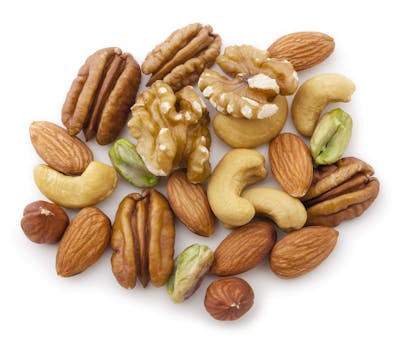



In addition to providing potential health benefits, nuts are also a convenient choice since they’re portable and shelf-stable. So, unless you have an allergy or sensitivity to nuts, there is no reason to give them up. Just keep portions small.
Below are the protein percentages and grams of protein, fiber, and net carbs per ounce (30 grams) of nuts, unless otherwise noted:
- Peanuts
Protein percentage: 18%
7.3 grams of protein, 2.5 grams of fiber, and 2.5 grams of net carbs per serving (approximately 1/4 cup or 35 peanuts, or 1.75 tablespoons of peanut butter) - Almonds
Protein percentage: 15%
6.2 grams of protein, 3.5 grams of fiber, and 2.5 grams of net carbs per serving (approximately 1/4 cup or 22 almonds, or 1.75 tablespoons of almond butter) - Pistachios
Protein percentage: 15%
5.7 grams of protein, 3 grams of fiber, and 4.5 grams of net carbs per serving (approximately 1/4 cup or 49 pistachios) - Cashews
Protein percentage: 12%
5 grams of protein, 1 gram of fiber, and 7.5 grams of net carbs per serving (approximately 20 cashews) - Hazelnuts
Protein percentage: 10%
4.2 grams of protein, 2.8 grams of fiber, and 2 grams of net carbs per serving (approximately 20 hazelnuts) - Walnuts
Protein percentage: 9%
4.3 grams of protein, 2 grams of fiber, and 2 grams of net carbs per serving (approximately 15 walnut halves) - Brazil nuts
Protein percentage: 9%
2.7 grams of protein, 1 gram of fiber, and 0.7 grams of net carbs per serving (approximately four Brazil nuts). Note: Limit intake to a maximum of four Brazil nuts in any one day due to their high selenium content. Avoid eating more than two Brazil nuts per day on a regular basis. - Pine nuts
Protein percentage: 8%
3.9 grams of protein, 1 gram of fiber, and 2.5 grams of net carbs per serving (approximately one-quarter cup of pine nuts) - Pecans
Protein percentage: 5%
2.6 grams of protein, 2.7 grams of fiber, and 1 gram of net carbs per serving (approximately 19 pecan halves) - Macadamia nuts
Protein percentage: 4%
2.2 grams of protein, 2.4 grams of fiber, and 1.5 grams of net carbs per serving (approximately 10 to 12 macadamia nuts)
Summary
While nuts may not be the best protein source, choosing types with higher protein percentages and lower net carb content can be a tasty addition to any diet. Just remember to limit portion sizes and ensure you get enough protein from other sources such as meat, seafood, eggs, beans, and soy.
Recipes featuring nuts
Here are a few of our favorite high-protein recipes that get a boost of flavor and crunch from nuts:



